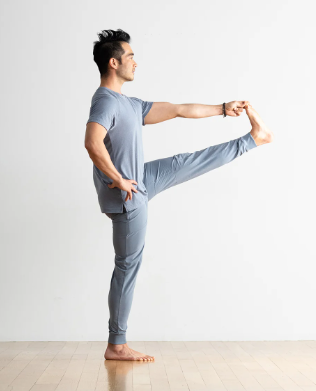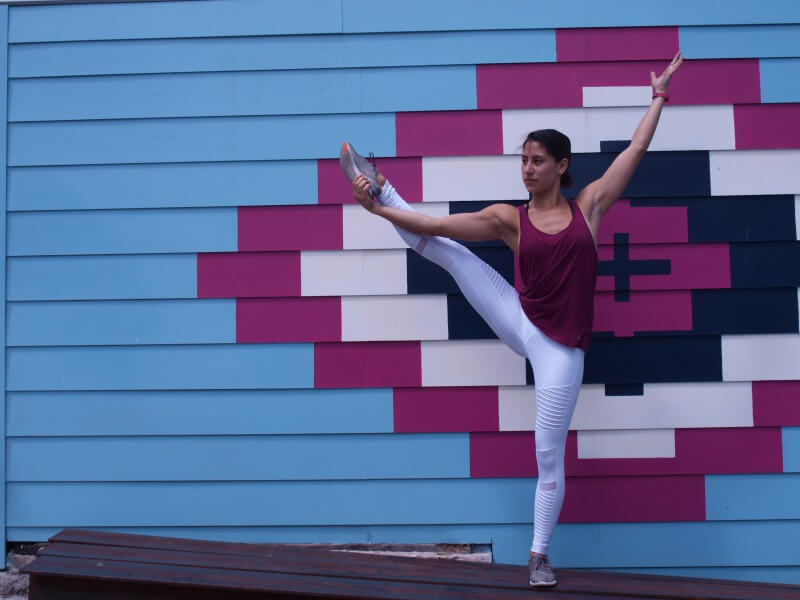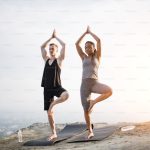Cardio, Workout, and Yoga… by mixing supsersets with yoga we can create the ultimate hybrid routine. That’s why it’s called ‘super’!
If you tried out the Chest and Tricep Flow you’ll have already experienced a little preview of this week’s flow at the end, when going from Plank to Side Plank. That is an example of a super set. If you’re wondering, what exactly is a super set, allow me to break it down for you. It’s a training technique where you choose two exercises from opposing muscle groups (i.e. chest and quads) or in the same muscle group (i.e. squats and leg extensions) and you alternate between the two.
The trick is to practice these two exercises with very little rest in between. Making yourself wait a little longer for a break helps with weight loss and building muscle. By playing with that theme on my mat, I’ve come up with a handful of poses that work well together for you to gain maximum benefits.
THE ‘SUPER’ YOGA FLOW
Before you get started, warm yourself up with a few Cat/Cow Poses along with a few Sun Salutations to get the blood moving and limbs warm. Be sure to breathe through the poses and take a break when needed. You will be holding each āsana for one breath before flowing into the next pose.
1. WARRIOR 2 TO REVERSE WARRIOR

- Start with your feet parallel and one leg-length apart. Rotate your left foot out 90 degrees and your right foot in slightly, so your left heel is lined up with the arch of your right foot. Bend your front knee, bringing your thigh parallel to the floor with your knee over your heel. Relax your lower back and keep your front ribs in. Keeping your inner elbows straight, reach actively with your arms to raise them parallel to the floor. Gaze over your front fingertips.
- Keeping your lower body in the Warrior II position. Rotate the the palm of your front hand to the ceiling. Sweep your arm up and back in an arching movement. Lightly touch your back leg with your rear hand, letting it land on your back thigh or calf. Spiral your chest open and keep your tailbone dropped to avoid pitching in the lower back.
- Following your breath, flow back and forth between these poses so that you occupy both of them three times. Then change sides (with a vinyāsa if you’d like) and repeat. This works your quadriceps as you hold the pose and stretches your upper and side body.
2. EXTENDED SIDE ANGLE TO HALF-MOON POSE
- Beginning on the left in Warrior 2, keep your spine straight as you move the fingertips of your left hand to the floor outside of your front leg. Reach up with your right arm and rotate your palm forward. Extend your arm overhead forming a straight line from the tips of your fingers to your back foot. Relax your shoulders down and keep your chest open.
- Slide your left hand about eight inches in front of your toes. On an inhale, lift your rear leg up until it is parallel with the floor. Straighten your front leg and draw your left glute inward to open your hips. Lift your top arm straight up and stack your shoulders. If this is comfortable, move your gaze upward to further challenge your balance.
- Flow in and out of the poses, aiming to keep your movements smooth, for a total of five times before repeating on the opposite side. This will focus on working the muscles of your standing leg, mainly the gluteus medius while simultaneously stretching and strengthening your obliques.
Modification: If you have trouble reaching the floor in Half-Moon, rest your hand on a block.
3. TREE POSE

- Starting in Tādāsana. Bend your right knee and clasp your big toe with your right thumb and index fingers. Relax your shoulders and extend your right leg straight as far as you can without losing your grip or straining your shoulders. Keep your hips level and supporting leg straight. Lift your chest tall and rest your gaze slightly past your lifted big toe.
- Keeping hold of that big toe, bring the sole of your right foot to your left inner thigh. Press your foot into your thigh and your thigh into your foot. Engage your core and extend your arms upward, shoulder-width apart. Draw your gaze upwards to challenge your balance.
- Flow between these two standing balance poses (focussing on keeping the movements smooth) to really work your core muscles, stability, and the standing leg. Repeat three times on each side.
Modification: Use a strap for your foot if you can’t reach your toes. Depending on your hip flexibility, you can modify Tree Pose by placing your foot above or below — but not on — your knee. If you need to, start practising close to a wall for balance, but be sure to move away as soon as you can do it on your own.
4. WARRIOR 3
- Beginning in Mountain Pose again, step back about one leg-length with your left foot as you bend your right knee to a 90-degree angle. Keep both feet hip-width apart, with your weight resting on the heel of your front foot and on the ball of your back foot. Engage your lower belly to extend your lower back and raise your arms straight over your head, keeping them shoulder-width apart.
- Keep your arms extended above your head and lean forward over your front thigh. Keep your gaze forward and lift your back leg off the floor until it is parallel with the floor. Extend your upper chest and gaze forward as you flex your back foot, keeping your leg straight and all of your toes pointing down. Your arms should extend straight out in front of you and keep them shoulder-width apart or join your palms together and your heart.
- Safely flow between this intense balancing set about five times times before repeating on the opposite side. This will be working stability for your front leg and your core.
5. ŪRDHVA MUKHA ŚVĀNĀSANA

- This familiar flow is the perfect way to end this super set with triple threat exercise bringing balance back to the body after all the one-sided super sets. It’s also good for working your arms and chest!
- Repeat five times before finally resting in Śavāsana.
HOW DO YOU FEEL? SUPER?
How did that compare to the other hybrid yoga sequences? Which was your favorite? Let me know what you thought, how you felt, or what you would add to them. Keep coming back to these sequences if you ever feel like you need to challenge a certain part of your body, or rev up your practice in general! Thanks for joining us!












